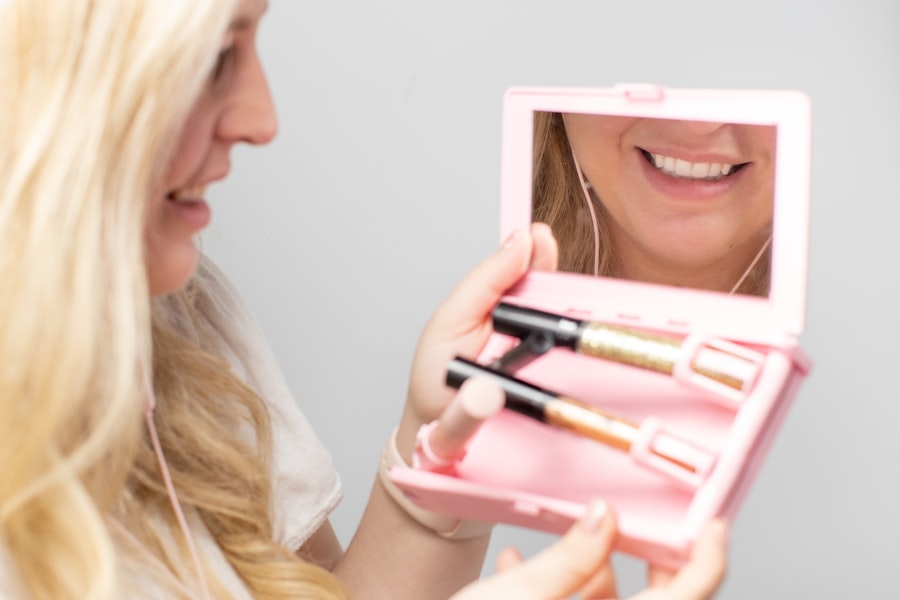Laser hair removal has emerged as a popular choice for individuals seeking a long-term solution to unwanted hair. This innovative technique utilizes concentrated beams of light to target and destroy hair follicles, effectively reducing hair growth over time. If you’ve been considering this method, you’re not alone; many people are drawn to the promise of smooth, hair-free skin without the hassle of traditional hair removal methods like shaving or waxing.
The appeal lies not only in its efficiency but also in its potential for lasting results, making it an attractive option for those tired of the constant upkeep associated with other hair removal techniques. As you delve into the world of laser hair removal, it’s essential to understand how the process works and what it entails. The procedure involves the use of a laser device that emits light absorbed by the pigment in the hair follicles.
This absorption generates heat, which damages the follicles and inhibits future hair growth. While the technology has advanced significantly over the years, making it safer and more effective, it’s crucial to consider various factors, especially when it comes to sensitive areas like the face. Understanding these aspects will help you make an informed decision about whether laser hair removal is right for you.
Key Takeaways
- Laser hair removal is a popular method for removing unwanted facial hair, using concentrated light to target hair follicles.
- When performed by a qualified professional, laser hair removal for facial hair is generally safe and effective.
- Potential risks and side effects of laser hair removal for facial hair include skin irritation, redness, and changes in skin pigmentation.
- Precautions and considerations for facial hair removal with laser include avoiding sun exposure and certain medications that can increase the risk of complications.
- It is important to choose a qualified professional with experience in laser hair removal for facial hair to ensure safety and optimal results.
The Safety of Laser Hair Removal for Facial Hair
When contemplating laser hair removal for facial hair, safety is likely one of your primary concerns. The face is a sensitive area, and any procedure performed there should be approached with caution. Fortunately, when performed by a qualified professional, laser hair removal is generally considered safe for most skin types and hair colors.
The lasers used today are designed to minimize discomfort and reduce the risk of adverse effects. Many clinics utilize advanced technology that allows for precise targeting of hair follicles while protecting the surrounding skin. However, it’s essential to recognize that individual responses to laser treatment can vary.
Factors such as skin type, hair color, and even hormonal changes can influence how your skin reacts to the procedure. For instance, individuals with darker skin tones may require specific laser settings to ensure safety and effectiveness. Before undergoing treatment, a thorough consultation with a qualified practitioner will help assess your unique situation and determine the best approach for your needs.
This step is crucial in ensuring that you can enjoy the benefits of laser hair removal while minimizing any potential risks.
Potential Risks and Side Effects

While laser hair removal is generally safe, it’s important to be aware of potential risks and side effects associated with the procedure. Common side effects may include temporary redness, swelling, or mild discomfort in the treated area. These symptoms typically subside within a few hours to a couple of days following treatment.
However, in some cases, individuals may experience more significant reactions such as blistering or changes in skin pigmentation. These occurrences are rare but can happen, particularly if the procedure is not performed correctly or if post-treatment care is neglected. To mitigate these risks, it’s essential to follow pre- and post-treatment guidelines provided by your practitioner.
This may include avoiding sun exposure before and after treatment, as well as refraining from certain skincare products that could irritate the skin. Additionally, understanding your skin type and any underlying conditions can help your practitioner tailor the treatment to suit your needs better. By being proactive about your skin health and adhering to safety protocols, you can significantly reduce the likelihood of experiencing adverse effects.
Source: Mayo Clinic
Precautions and Considerations for Facial Hair Removal
| Precautions and Considerations for Facial Hair Removal |
|---|
| 1. Patch Test: Always perform a patch test to check for any allergic reactions or skin sensitivities. |
| 2. Skin Type: Consider your skin type before choosing a facial hair removal method to avoid irritation or damage. |
| 3. Professional Advice: Consult a dermatologist or professional before trying new facial hair removal techniques. |
| 4. Hygiene: Ensure that the tools and products used for facial hair removal are clean and sanitized to prevent infections. |
| 5. Sun Protection: Protect the skin from sun exposure after facial hair removal to avoid pigmentation or sunburn. |
Before committing to laser hair removal for facial hair, there are several precautions and considerations you should keep in mind.
While many individuals experience significant hair reduction after a series of treatments, complete hair removal is not guaranteed for everyone.
Factors such as hormonal imbalances or genetics can influence hair growth patterns, so understanding that results may vary is essential. Another important consideration is your skin type and sensitivity. If you have a history of skin conditions such as eczema or psoriasis, or if you are prone to hyperpigmentation, discussing these issues with your practitioner is crucial.
They may recommend a patch test before proceeding with full treatment to assess how your skin reacts to the laser. Additionally, if you are currently taking medications that affect your skin or immune system, be sure to disclose this information during your consultation. Taking these precautions will help ensure that you are well-prepared for the procedure and can achieve optimal results.
The Importance of Choosing a Qualified Professional
One of the most critical factors in ensuring a safe and effective laser hair removal experience is selecting a qualified professional to perform the procedure. Not all practitioners have the same level of training or expertise, so it’s essential to do your research before making a decision. Look for licensed professionals who specialize in laser treatments and have a solid track record of successful outcomes.
Reading reviews and testimonials from previous clients can provide valuable insights into their experiences. During your initial consultation, don’t hesitate to ask questions about the practitioner’s qualifications, experience with facial hair removal specifically, and the technology they use. A reputable professional will be transparent about their credentials and will take the time to address any concerns you may have.
Remember that this is a medical procedure; therefore, ensuring that you feel comfortable and confident in your provider’s abilities is paramount to achieving satisfactory results.
Alternatives to Laser Hair Removal for Facial Hair

If you’re hesitant about laser hair removal or if it doesn’t seem like the right fit for you, there are several alternatives available for facial hair removal. Traditional methods such as shaving, waxing, and threading remain popular choices among individuals seeking quick fixes for unwanted facial hair. Each method has its pros and cons; for instance, shaving is painless and can be done at home but may require frequent upkeep, while waxing offers longer-lasting results but can be uncomfortable.
Another alternative gaining traction is electrolysis, which involves using an electric current to destroy individual hair follicles. Unlike laser hair removal, electrolysis is effective on all skin types and hair colors but can be time-consuming since each follicle must be treated individually. Additionally, there are various depilatory creams available that dissolve hair at the skin’s surface; however, these products may cause irritation for some individuals.
Exploring these alternatives will help you find a method that aligns with your preferences and lifestyle.
Aftercare and Maintenance for Laser Hair Removal
Aftercare plays a crucial role in ensuring optimal results following laser hair removal treatments. Once your session is complete, your practitioner will likely provide specific aftercare instructions tailored to your skin type and treatment area. Common recommendations include avoiding sun exposure for at least two weeks post-treatment and applying sunscreen diligently when going outdoors.
This precaution helps protect your skin from potential pigmentation changes caused by UV rays. Additionally, it’s essential to keep the treated area clean and moisturized while avoiding harsh skincare products that could irritate the skin during the healing process. You may also be advised to refrain from activities that cause excessive sweating or heat exposure, such as hot baths or vigorous exercise, for a short period after treatment.
Following these aftercare guidelines will not only enhance your results but also contribute to your overall skin health.
Is Laser Hair Removal Safe for Facial Hair?
In conclusion, laser hair removal can be a safe and effective option for facial hair removal when performed by a qualified professional under appropriate conditions. While there are potential risks and side effects associated with the procedure, understanding these factors and taking necessary precautions can significantly mitigate them. By choosing a skilled practitioner and adhering to aftercare guidelines, you can enjoy smoother skin without the constant upkeep required by traditional methods.
Ultimately, whether laser hair removal is right for you depends on various factors including your skin type, hair color, and personal preferences regarding hair removal methods. If you’re considering this option, take the time to research thoroughly and consult with professionals who can guide you through the process. With informed decision-making and proper care, you can achieve satisfying results that enhance your confidence and comfort in your own skin.
Check out this article on customizing your laser hair removal treatment to ensure you achieve the best results possible.
FAQs
What is laser hair removal?
Laser hair removal is a cosmetic procedure that uses a concentrated beam of light (laser) to remove unwanted hair. The light is absorbed by the pigment in the hair follicles, which damages the follicle and inhibits future hair growth.
Is it safe to remove facial hair by laser?
Laser hair removal is generally considered safe for removing facial hair. However, it is important to have the procedure performed by a qualified and experienced professional to minimize the risk of complications.
Are there any potential side effects of laser hair removal on the face?
Some potential side effects of laser hair removal on the face may include temporary redness, swelling, and discomfort. In rare cases, there may be changes in skin pigmentation or scarring. It is important to discuss potential risks with a healthcare provider before undergoing the procedure.
How many sessions are typically required for laser hair removal on the face?
The number of sessions required for laser hair removal on the face can vary depending on factors such as hair color, skin type, and the area being treated. On average, multiple sessions spaced several weeks apart are needed to achieve the desired results.
Is laser hair removal on the face permanent?
Laser hair removal can lead to long-term hair reduction, but it is not always permanent. Some hair may eventually grow back, although it is often finer and lighter in color. Maintenance sessions may be needed to sustain the results.




